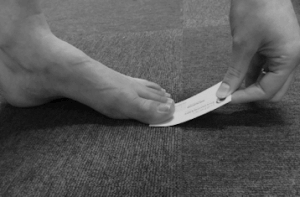Do you feel pain in your ankle or foot during ballet classes? If so, you are not alone!
Have you recently started Ballet or increased the number of classes your perform each week? Started noticing pain to your foot or ankle? Well you are not alone…
In fact, the foot and ankle is the most common area of injury for professional and recreational Ballet dancers! This is due to the high impact forces and stress placed on the lower leg whilst performing Ballet. Some injuries in the foot and ankle, such as a 2nd metatarsal stress fracture (a stress fracture of the foot), are almost exclusively unique to Ballet dancers!
Our resident Dance Physiotherapist Jayde treats Ballet dancers of a variety of ages and abilities and has these helpful tips to reduce the risk of injury –
Strength
Strength is essential to prevent injury in Ballet, and in fact, this applies to any form of dance. However, calf strength in particular has been proven to reduce your risk of lower limb injuries.
So, how many calf raises can you do?
It’s recommended that Ballet dancers should be able to perform at least 30 single leg calf rises with good technique. For more information on how to perform a calf rise, see our video HERE – https://youtu.be/7a8iAIQKDXg
Another group of muscles that help reduce your risk of injury, especially in ballet dancers, are your foot intrinsic muscles. These muscles are located in your feet (funnily enough) and support the arch of your foot.
So, how strong are you foot intrinsic muscles?
Try this quick test –
Place a business card under your toes and try to pull the card out with your fingers. Use your toes to keep the card in place.
Your toes should remain flat and long, while no muscles at the front of your ankle should assist.
If you can’t do this, and you can feel the muscles of your ankle working hard to try and help out, then you don’t have good foot intrinsic strength. The great news is that you can train them!
Try this exercise – “Toe push ups”.
Place a theraband under a straight toe and push the toe flat to the ground. You can repeat this with each toe.
You should feel the muscles under the arch of your foot working.
It may feel frustrating to start with, while the brain figures out how to coordinate all the correct muscles, but persist!
Strong feet will reduce your injury risk and improve your ballet or dance technique!
Jayde completed her Bachelor Dance with the Victorian College of the Arts, and performed for several years prior to going on to complete her Bachelor of Health Science with a Masters in Physiotherapy.
If you, or your children are suffering from foot or ankle pain, Jayde performs Pre-pointe and Dance Assessments at Pathways Physiotherapy. You can call us on 97522368, or book online HERE.



